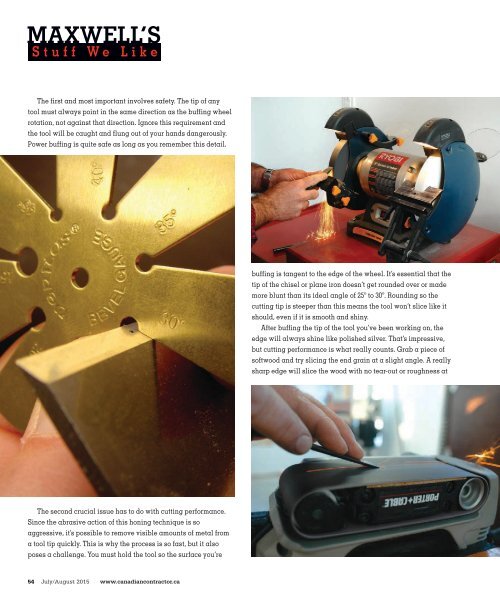Canadian Contractor - July-August 2015
Create successful ePaper yourself
Turn your PDF publications into a flip-book with our unique Google optimized e-Paper software.
MAXWELL’S<br />
Stuff We Like<br />
The first and most important involves safety. The tip of any<br />
tool must always point in the same direction as the buffing wheel<br />
rotation, not against that direction. Ignore this requirement and<br />
the tool will be caught and flung out of your hands dangerously.<br />
Power buffing is quite safe as long as you remember this detail.<br />
buffing is tangent to the edge of the wheel. It’s essential that the<br />
tip of the chisel or plane iron doesn’t get rounded over or made<br />
more blunt than its ideal angle of 25º to 30º. Rounding so the<br />
cutting tip is steeper than this means the tool won’t slice like it<br />
should, even if it is smooth and shiny.<br />
After buffing the tip of the tool you’ve been working on, the<br />
edge will always shine like polished silver. That’s impressive,<br />
but cutting performance is what really counts. Grab a piece of<br />
softwood and try slicing the end grain at a slight angle. A really<br />
sharp edge will slice the wood with no tear-out or roughness at<br />
The second crucial issue has to do with cutting performance.<br />
Since the abrasive action of this honing technique is so<br />
aggressive, it’s possible to remove visible amounts of metal from<br />
a tool tip quickly. This is why the process is so fast, but it also<br />
poses a challenge. You must hold the tool so the surface you’re<br />
54 <strong>July</strong>/<strong>August</strong> <strong>2015</strong> www.canadiancontractor.ca

















